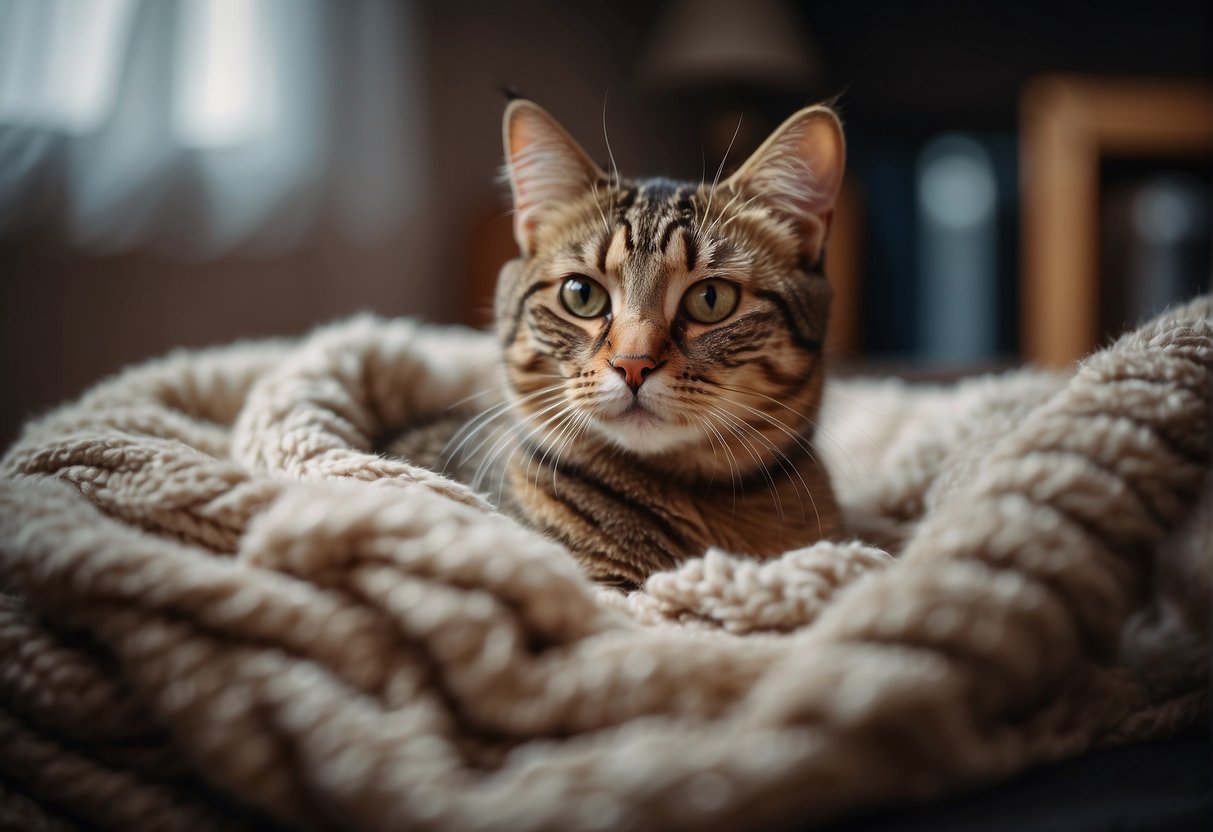Caring for a tripod cat involves understanding their unique needs and making a few adjustments to your home and routine to support their well-being.
I have a friend who owns a three-legged cat, and I must say they adapted remarkably to life on three paws, showing resilience that truly amazed me.
My friend ensured all necessary items like food, water, and litter were easily accessible without the need to climb or jump.

Valuing the boundless spirit of tripod cats, it’s important to create a living space that is safe and comfortable for them.
Soft bedding is vital to cushion their joints, and adding extra padding around the house can prevent unnecessary strain.
Observing your tripod cat as they navigate their surroundings will help you spot areas that might need tweaking, like securing rugs to prevent slipping or rearranging furniture to make movement more fluid.
The Life Of Tripod Cats

Caring for a three-legged cat, also known as a tripod, requires understanding the root cause of their condition and how it affects their overall health and well-being.
Your support and knowledge are essential in fostering a loving and comfortable environment for these resilient felines.
Reasons for Amputation
Amputation in cats is often a necessary intervention following a traumatic injury or due to congenital disabilities that impact the functionality of a limb.
The well-being and quality of life of your cat are the primary considerations when deciding on amputation.
Situations like severe fractures, cancer, or conditions from birth can leave no other choice but to amputate a limb to relieve pain and allow the cat a chance at a more normal life.
Health and Well-Being
The health and overall well-being of a tripod cat rest on managing their lifestyle to ensure they are comfortable.
Your tripod cat can lead a fulfilling life with proper adjustments, such as:
- Surfaces: Emphasize the use of soft bedding and plush resting areas to alleviate strain on the remaining limbs.
- Mobility: Monitor their abilities to navigate their surroundings, adapting your home to minimize challenges.
- Medical Attention: Regular veterinary check-ups are critical to managing any potential health issues related to the balance and extra pressure on the remaining limbs.
The Tripod Cat Community
Joining a tripod cat community can offer substantial support, allowing you to share experiences, gain insights, and find resources tailored for three-legged cats.
Daily Care and Management
Taking care of a tripod cat involves mindful attention to their dietary needs for weight management and thoughtful adaptations to their living space for comfort and safety.
You’ll find caring for your three-legged friend fulfilling with these tailored approaches.
Nutrition and Weight
To maintain a healthy weight and support joint health, it’s crucial to feed your tripod cat a balanced diet.
Your vet can help determine the right portion sizes and recommend a diet that keeps unnecessary weight off their remaining limbs. Here’s a quick guide:
- Portion Control: Follow vet-recommended portions to avoid overfeeding.
- Specialized Diets: Look for formulas that support bone and joint health.
Home Environment Adaptations
Your cat’s environment needs to be safe and accessible. Focus on these areas:
- Non-Slip Surfaces: Place rugs or yoga mats in high-traffic areas.
- Soft Surfaces: Invest in plush bedding to ease pressure on the limbs.
Consider accessibility:
- Easy Access: Furniture, beds, or window sills should be reachable with minimal jumping.
- Safety Measures: Block off areas where balance issues could lead to falls.
Litter Box Modifications
The litter box should be easy for your tripod cat to use. Adjustments can include:
- Low Entry Point: Ensure the edge is low enough for easy access.
- Larger Box: Provides more space to balance and turn around.
Keep it in an easily accessible place, and consider litter that doesn’t track as much to prevent slipping outside the box. Regular cleaning is also vital to encourage use and maintain hygiene.
Health and Exercise
Ensuring your tripod cat maintains good health and proper exercise is pivotal to their well-being.
Preventing Joint Problems
Your tripod cat is at a higher risk for arthritis and joint problems due to the increased strain on their remaining limbs.
To keep their joints healthy, consider adding a glucosamine and chondroitin supplement to their diet, as they can aid in repairing cartilage and maintaining joint health.
Look for a pet-specific formula and consult your vet for the correct dosage.
Additionally, fish oil supplements rich in omega-3 fatty acids have been known to help reduce inflammation associated with conditions like osteoarthritis.
Use non-slip mats or rugs to provide traction, minimizing the risk of slipping, which could strain the joints.
Also, consider how your cat moves through their environment; a prosthesis might be beneficial if they seem to struggle, but this requires veterinary guidance.
Physical Therapy and Exercise
Regular exercise adapted to their capabilities can help your tripod cat stay healthy and manage weight, which is crucial to reduce extra strain on the joints.
Initiate play sessions with light toys or laser pointers to encourage movement.
Keep in mind, exercising should not involve extensive jumping or rough play—gentle activities are key.
Physical therapy may also be advantageous, especially post-surgery, to strengthen muscles.
Some therapies might include controlled walking exercises or the use of balance boards.
Any therapeutic exercise should be performed under professional supervision.
A specialized physical therapist can tailor a regimen that includes MSM (methylsulfonylmethane), which supports joint flexibility and pain relief for conditions like arthritis.
Emotional Well-Being and Support
Caring for a tripod cat involves more than just meeting their physical needs; their emotional health is equally important.
Behavioral Considerations
Your tripod cat must feel emotionally secure to thrive.
Supervision is key when they first adjust to their new situation.
Observe their behavior closely: are they attempting to jump or climb as they did before?
Instability may lead to frustration or even depression if they fail.
To combat this, ensure that their environment is safe and accessible.
Modify their surroundings to enhance their stability; lower perches and step-assist ramps can help adult cats maintain independence and confidence.
Provide scratching options that don’t require them to balance precariously, like sturdy, low-height scratchers.
Connecting with Other Tripawd Owners
Joining the Tripawds community can be invaluable for both you and your three-legged companion.
Sharing your experiences can help you understand what’s normal vs. what may require more attention.
Interacting with other owners provides a network of support and a font of creative solutions for potential problems specific to tripod pets.

My name is James, and welcome to FAQCats!
Along with our team of cat owners, expert pet enthusiasts, and pet professionals, we aim to write engaging helpful, engaging content about cats. At FAQCats we strive to provide content that’s accurate and fun to read. Our team writes about everything related to cats; even the most complex of topics. Through extensive research and caring for our own fur-pals, we’re able to provide something cat owners worldwide will love. Have a look around, and leave us feedback anytime!

